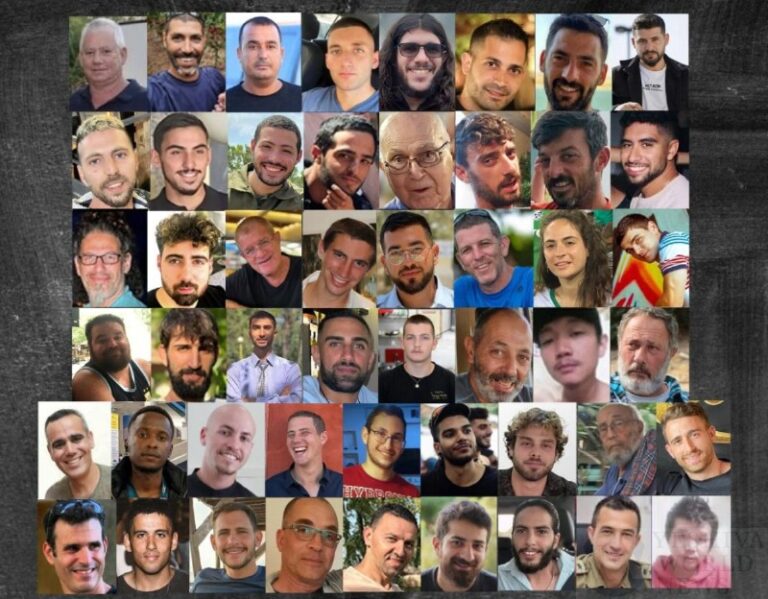 Like an amusement park barker inviting passers-by to step right up and throw balls at some unfortunate’s head sticking through a hole, The New York Times editorial page seems to have been calling on any and all to pitch print projectiles at a mark of its own: the kosher-meat producer Agriprocessors.
Like an amusement park barker inviting passers-by to step right up and throw balls at some unfortunate’s head sticking through a hole, The New York Times editorial page seems to have been calling on any and all to pitch print projectiles at a mark of its own: the kosher-meat producer Agriprocessors.
An editorial in that newspaper on August 1 was entitled “’The Jungle’ Again” – a reference, of course, to Upton Sinclair’s famous novel depicting the horrors of the meatpacking industry in early 20th century Chicago. That book depicts a world of unsanitary, cruel and unsafe conditions, with human fingers mixed into ground meat, gross mistreatment of workers, corruption, venality and filth. Having set the tone with its title, The Times’ editorial begins by referring to “a slaughterhouse in Postville, Iowa” with “an ugly reputation for abusing animals and workers,” and goes on to cite “reports of dirty, dangerous conditions” there.
While the editorial’s thrust was aimed at the government’s treatment of illegal immigrants arrested at the facility, the imagery of the “kosher meatpacking plant” [emphasis – or at least the italics – mine] and the “abusive practices” of which “once-silent workers now tell” was firmly embedded in minds’ eyes before they likely glazed over as the editorial went on with a predictable lambasting of the government for enforcing immigration laws.
A cynic, or perhaps just a savvy observer, might note that many of the alleged abuses have been denied and none confirmed, and that federal inspectors were a constant presence at the plant.
He might further note the involvement of an activist labor union in the Agriprocessors controversy. And further still, that a possible reason why “once-silent” workers only began telling tales of mistreatment after their arrests and facing deportation may have to do with something called a “U visa” – a special permit to remain in the United States available to noncitizens who have been abused by employers and might be helpful to a prosecution of that crime.
One didn’t have to be either cynical or savvy, though, to have been unimpressed by a letter to the editor of the same paper several days earlier from Ingrid Newkirk, the president of People for the Ethical Treatment of Animals, or PETA, in which she draws a parallel between “routine animal abuse” at Agriprocessors (that would be a post-slaughter practice that was discontinued after objections to it were raised) and the “human suffering” of the company’s employees. “It should come as no surprise.” she wrote, “that a facility that profits from tormenting and killing animals would also oppress and abuse humans.”
One wonders what the PETA president might make of the principled vegetarianism of human abusers like Charles Manson, Pol Pot and Adolph Hitler, ym”sh. One needn’t even wonder, unfortunately, about her reaction to a recent murder, the stabbing to death, dismemberment and cannibalism of an innocent passenger on a bus near Manitoba, Canada. Ms. Newkirk attempted to place an ad in a local newspaper describing how “his cries are ignored… the man with the knife shows no emotion… the victim is slaughtered… and his flesh is eaten” – before informing readers that the description was – surprise! – of an animal in a slaughterhouse. The paper chose to reject the ad, perhaps seeing it as abusive in its own way. She should have tried The Times.
But the crowning outrage came on August 6, in a superficially high-minded but innately ugly op-ed piece deemed fit to print by The Times. Written by the rabbi of an Orthodox congregation in Washington, D.C., the piece’s “hook” was the imminence of Tisha B’Av, and the preceding eight days when observant Jews eschew meat. Therefrom, the writer – following The Times’ and Ms. Newkirk’s lead and taking accusations as facts – decries the “abusive practices” at Agriprocessors (described, he explains, in “government documents” – i.e. affidavits of illegal immigrant workers’ claims).
Although he takes the necessary pains to avoid a libel lawsuit, throwing in the requisite qualifiers, the rabbi marches proudly in step with the editorial page’s drumbeat, nobly slapping his fist against the collective Jewish breast in penance for the unproven sins of others.
I do not know if Agriprocessors knowingly hired illegal aliens, or mistreated workers or was a front for a drug operation, as statements in the “government documents” allege. But neither do The New York Times, PETA or the rabbi. And so, until the facts are known, none of us has any moral right to act as if we know what we cannot.
Which is why some readers, like this one, felt that the rabbi’s Tisha B’Av hook was indeed most appropriate for his op-ed. Although not quite in the way the rabbi intended.
For Tisha B’Av, of course, according to our mesorah, has its roots in the failure of character of those b’nai Yisroel in the midbar who, the Torah tells, spoke ill of Eretz Yisroel, the land promised them by Hashem.
“If speaking ill of trees and stones is [so sinful],” comments the Gemara (Arachin 15a), “all the more so is speaking ill of one’s fellow.” And so Tisha B’Av is a mournful moment in Jewish time because of the grave sin of slander.
© 2008 AM ECHAD RESOURCES
[Rabbi Shafran is director of public affairs for Agudath Israel of America.]











7 Responses
What did you expect of the NY Times?
Very nice and thought-provoking article. In summary, the media is not concerned with shmiras haloshon. In fact, it is quite the opposite.
Thank you Rabbi Shafran for your very incisive comments. Unfortunately, this Rabbi is proponent of “open orthodoxy”, is a major player in an “activist” organization, and has made wild, “off-the-cuff” comments on major issues in the past. He publicly once stated and wrote, in a way most frum people would find objectionable, why most YU students marry young. Most recently, he wrote an article in which he stated that just because Obama’s pastor made repugnant remarks is not a reason not to vote for him. He is well known to be so far left that he does not represent ANY segment of even modern orthodoxy.
Not surprising. The New York Times is owned by the Sulzberger (or is it Sleazeberger?) family, who are assimilated, reform Jews. Their hatred of Orthodox Jews and Medinas Yisrael has been evident for a long time.
In fact, the new chairman of the Chicago Tribune (who is a Jew) recently remarked that when he reads the New York Times he cannot see any difference between the front page and the editorial page. Or as others have said, the real motto of the Times is: If the news fits (their editorial agenda, they) print it.
“In summary, the media is not concerned with shmiras haloshon.”
I didn’t notice, however, any concern expressed in Rabbi Shafran’s article or the subsequent comments on the over 300 individuals imprisoned for five months and facing deportation as a result of their employment at Agriprocessors. Two supervisors have already been arrested for falsifying immigration documents. What about the mitzva of of “lifnei eever”? If we find after all the investigations and prosecutions have been concluded that was complicit in immigration fraud who’s going to give these individuals back the collective years they will have spent in prison and the “tzar” their families endured? I doubt these families will seek redress in a Beis Din.
“The Rabbi” referred to in The Times Op-Ed piece merely called for a thorough investigation by the OU and RCA of this plant’s treatment and practices of both people and animals. There’s certainly sufficient evidence to warrant this type of proactive investigation. See also in this article a statement that Rav Salanter, ZT’L refused to provide a hechshar for a matza factory on the basis of their mistreating workers. To dismiss these recommendations because they come from a “proponent of ‘modern orthodoxy’ is not only silly but smacks from the same “sinas chinam” that resulted in our fast this past week. Rabbi Frand did a Tisha B’Av tape a few years ago on how intolerant elements of the charedei are. It’s worth hearing.
To Avraham #4: Just in the interest of accuracy, the present publisher of the NYT, Arthur Sulzberger, Jr. is not an assimilated Jew; in fact, he’s not a Jew. His mother not being Jewish, he openly stated in an interview when he assumed the position in an interview I read that people assume he’s Jewish because of his name, but in fact he’s not Jewish.
As to the editorial critiized by Rabbi Shafran, I haven’t seen it and won’t comment. I wonder how those who commented on it could do so in spite of apparently never having read it.
Rav Avigdor Miller z”l said one who buys the N.Y. Times supports what they stand for.